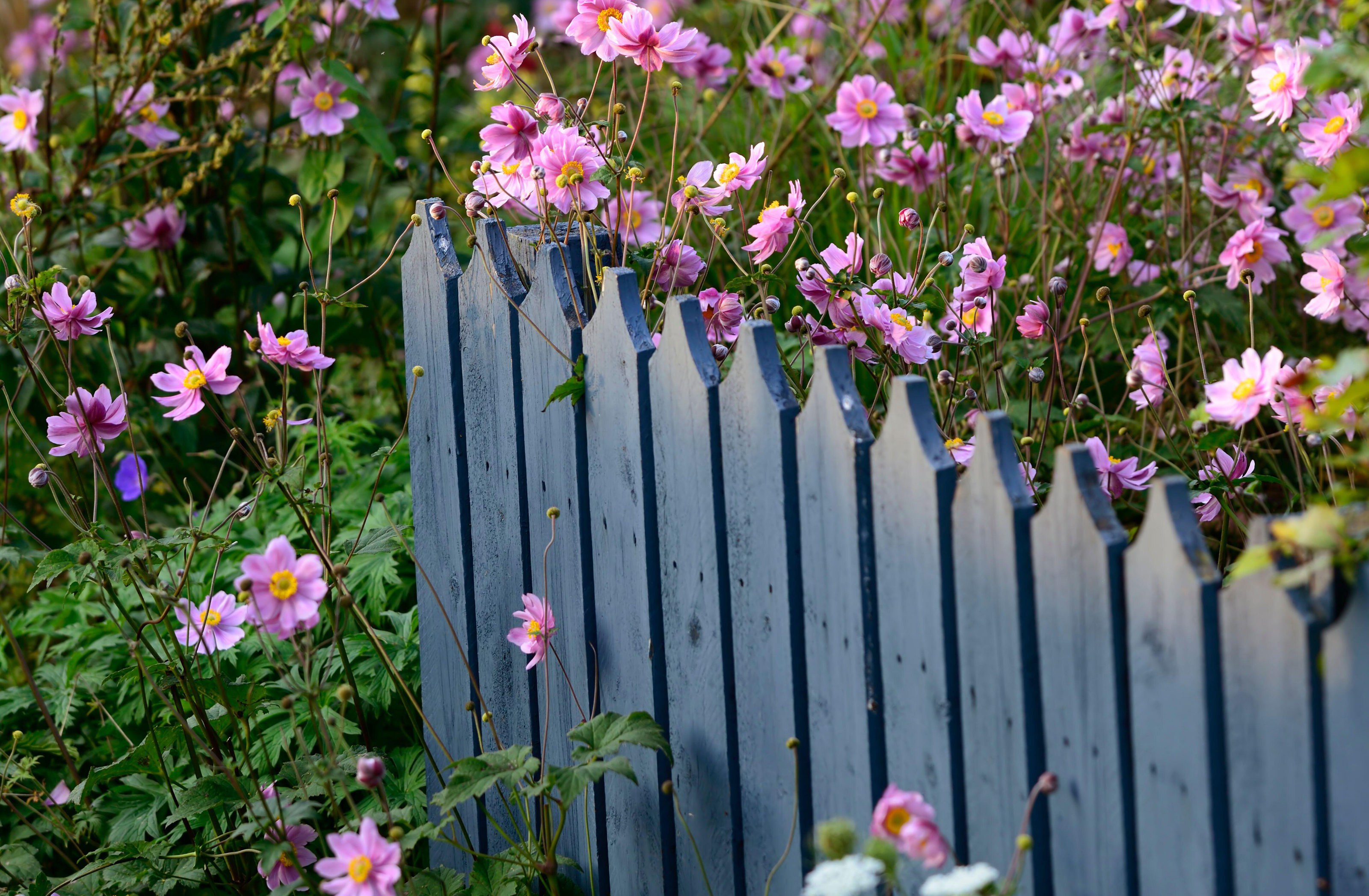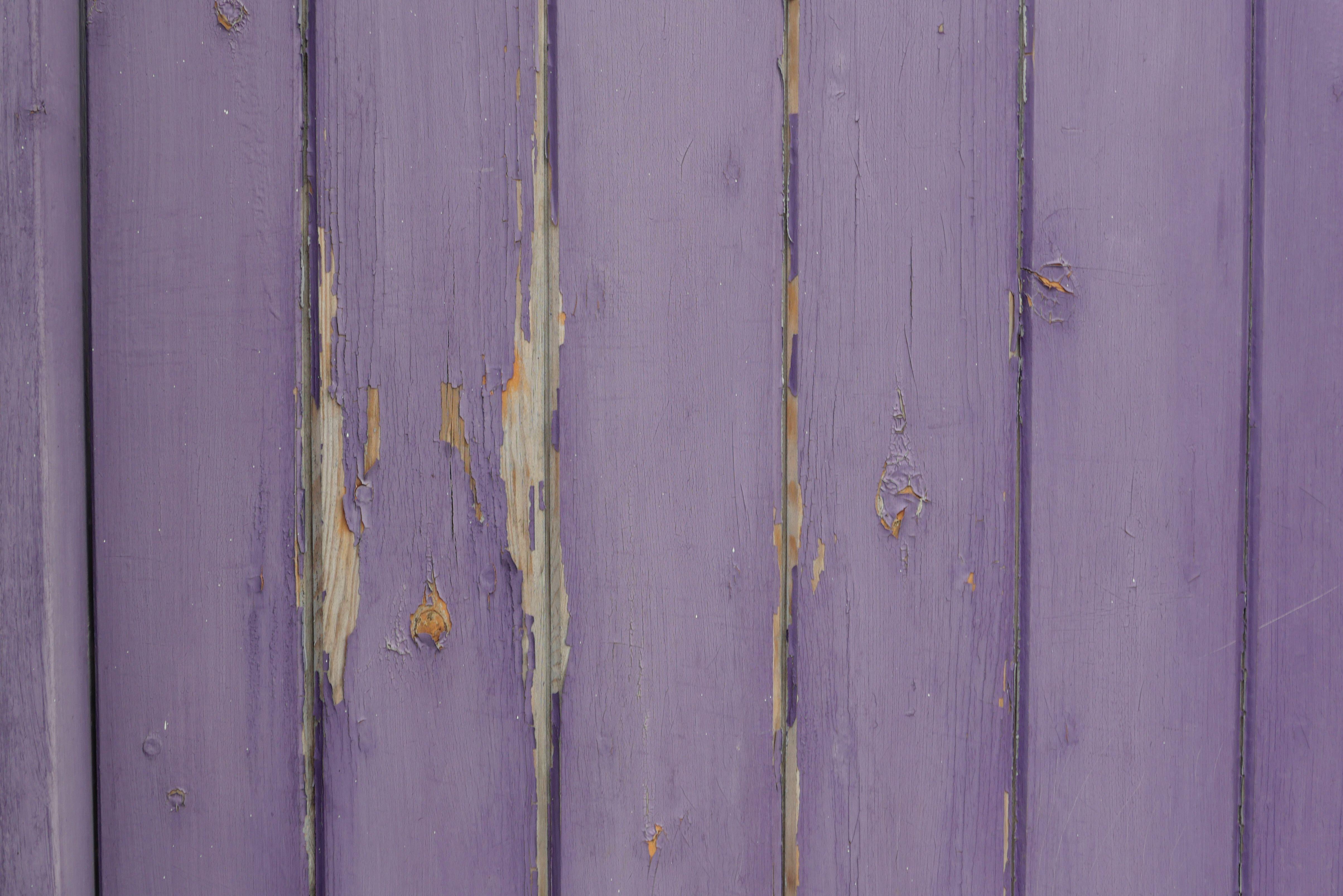Painting your fence this color now has a double meaning – and it's serious business
If you're looking to add a bit of color to your garden fence, it's probably best to avoid painting it purple without knowing what this shade means


There's a lot to love about the color purple. A deep amethyst hue is playful and fun and looks beautiful when used in our garden on pots or outdoor furniture. However, you might want to think twice before you paint it on your walls or fencing.
The Purple Paint Law is a type of legislation in the US that allows landowners to post their property using purple-colored markings on fences, posts, walls, trees, or other structures. While it's not the sort of thing you'll think about for your everyday backyard, these markings serve as a no trespassing symbol against hunting, fishing, or trapping while letting you know you are on private property.
First passed in Arkansas in 1987, the law is meant to offer landowners a way of marking their land without solely relying on signs which are more expensive, difficult to maintain, and often vandalized. The law is now also in place in fifteen states including Texas, North Carolina, and Florida. In some states, such as Pennsylvania, the purple paint markings are so widely acknowledged that they're permitted to be used in place of signage.
If you're wondering how to use purple paint on your property without sending the wrong signal to passers-by, we've dug up some information on how the purple paint law works and why it exists.
Why the color purple?
The color purple was chosen for no specific reason other than the fact it stands out, especially against the greens and browns of natural boundary lines. While people who are color blind may not perceive the color purple in the same way, its combination of blue and red means it should still stand out even if they don't see it as purple.
'It's an unmistakable purple color which indicates “No Hunting” and “No Trespassing",' Feraas Alameh, associate product manager at Krylon who sell a specific 'No Hunting' purple spray paint, tells us. Their weather-resistant and quick-drying exterior paint is ideal for trees, fences, metal gates and other property lines.

How will I recognize it, and what are the specifications of using purple paint?
It's best to check the legislation in your state, but in general, the rules surrounding the use of purple paint are very specific so that it cannot be confused with the accidental use of a similar purple.
The Livingetc newsletters are your inside source for what’s shaping interiors now - and what’s next. Discover trend forecasts, smart style ideas, and curated shopping inspiration that brings design to life. Subscribe today and stay ahead of the curve.
Generally speaking, however, one of these rules concerns the dimensions of the purple paint and how it must be positioned. First, it must be painted in vertical stripes, rather than in a spot or ring, and they must be at least eight inches long and one inch wide. They also need to be positioned in clear sight, high enough for anyone to see.
What penalty does it carry?
Ignoring Purple Paint markings can land you a criminal trespassing charge. Although this is largely considered a misdemeanor offense and therefore carries a less severe punishment, in some states a conviction can result in jail, although this is rare.
If you are caught trespassing, it's more likely you'll receive a fine up, but these can be up to $1,500. So, if you notice any purple markings on someone else's grounds while on your weekend walk, it's safest to stay away (unless you're prepared to pay the price)!

Lilith Hudson is a freelance writer and regular contributor to Livingetc. She holds an MA in Magazine Journalism from City, University of London, and has written for various titles including Homes & Gardens, House Beautiful, Advnture, the Saturday Times Magazine, Evening Standard, DJ Mag, Metro, and The Simple Things Magazine.
Prior to going freelance, Lilith was the News and Trends Editor at Livingetc. It was a role that helped her develop a keen eye for spotting all the latest micro-trends, interior hacks, and viral decor must-haves you need in your home. With a constant ear to the ground on the design scene, she's ahead of the curve when it comes to the latest color that's sweeping interiors or the hot new style to decorate our homes.